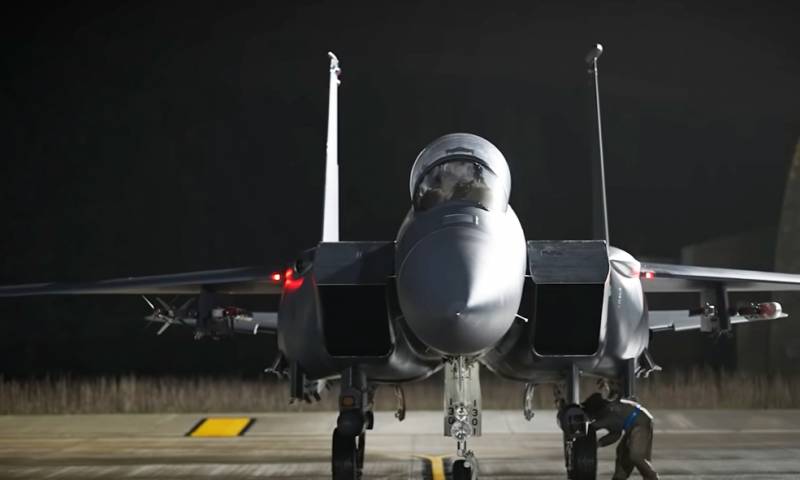Equipped with new electronic warfare systems: In the USA, they are testing updated versions of 4th generation fighters
After the appearance of models with the EX index, we can say that the F-15C and F-15E will become some kind of intermediate modifications, and the Boeing Corporation, in cooperation with BAE Systems (a division of Electronic Systems), will concentrate efforts on finalizing the latest avionics options and Electronic warfare. The only flying pair of F-15EX fighters so far has arrived for operational tests at Nellis Air Force Base in Nevada.
Testers already realize that they are dealing with a more modern version than the old F-15C, which uses a hydromechanical flight control system. Now the electronic “fly-by-wire” system is connected to the operation of the control units; in addition, a new generation of electronic protection against weapons with radar guidance - so the coherence of all digital assistants will be tested by pilots in various flight modes. The testing program for new versions of the 4th generation of fighters is designed for at least a week.
Experienced pilots were entrusted with testing new fighters. Major Kevin Hand is pinning his hopes on the updated Eagle Passive / Active Warning and Survivability System (EPAWS) electronic warfare system - the developers have promised that the capabilities of the improved equipment should provide a higher level of survivability during attack and defense in most anticipated air situations. Major Hand hopes that after confirming the inherent characteristics, the novelty will be introduced into mass production.
Lt. Col. Kenneth Juhl is responsible for overseeing the testing of equipment responsible for air-to-air and ground-to-air communications with the command center. A test in practice showed that information from pilots about the behavior of an aircraft in the air does not always and does not fully correspond to the readings recorded by the on-board digital assistants. Experts from the ground part of the test team must understand the reasons and eliminate all contradictions.
It should be clarified that the new fighters have already been in the sky before. The plane with the number “001” was delivered to the Eglin base in Florida in March of this year, and the plane “002” was brought up in April. Both modernized Eagles were handed over to the Team 6 of the Air Force Operational Test and Evaluation Center. Already in May, the planes showed themselves at the Northern Edge joint exercise in Alaska: this was the first test of the operability of GPS, radar and other complexes in the mode of overcoming electronic interference.
After testing at Nellis, the F-15EX will return to Eglin, where the necessary adjustments will be made based on the results of the tests carried out. The head of the testing project, Colton Myers, does not exclude that in addition to the corrected and supplemented software on the fighters, the weapons systems will be upgraded. Up to the ability to use hypersonic "ammunition". The problem is that there are no such weapons in the United States yet ...
Lieutenant Colonel Jul has already been informed of further plans: next year he plans to bring the F-15EX to the large-scale Red Flag-Nellis exercise.
History The McDonnell Douglas F-15 Eagle has been in production since 1972. The first aircraft entered service with the US Air Force in 1976, and McDonnell Douglas supplied the Pentagon until 1996 - until it was swallowed up by Boeing. Production of the F-15 and its modifications continued until 2019. Apparently, it was decided to give a second life to the proven family of air veterans - the old electronic warfare package for the F-15 ALQ-135 family no longer met modern requirements, and now the development of the EPAWS system from the BAE Systems laboratory came in handy.
Elements of the updated electronic warfare system are also present in the modifications of the F-35: specialists from BAE Systems have already concluded a deal for 77,5 million dollars. According to unofficial data, due to some slippages in the schedule of the management of Lockheed Martin for the further implementation of the F-35, it was decided to initiate in parallel work on a modified version of avionics for the F-15EX. The equipment is being integrated into a separate modification of the F-15 Advanced Eagle, designed for Saudi Arabia and Qatar.
- Nikolay Stalnov
- The official website of the corporation boeing.com

Information